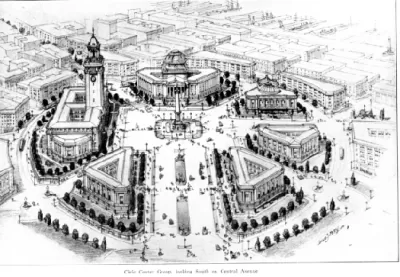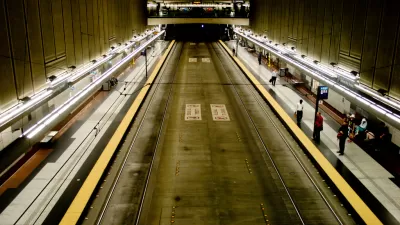Virgil Bogue's 1911 Plan of Seattle called for a centrally-planned metropolis with efficient transit, parks, and a cap on building height. It was voted down, but remains an interesting study on planning for the long term.

Seattle grew by leaps and bounds from the 1870s through the early 20th century. Expecting future expansion, engineer Virgil Bogue developed a comprehensive plan to accommodate over a million people. The ambitious project failed to garner enough support, but in today's transit-friendly climate it's an interesting piece of 20th-century planning that pays little attention to cars.
The 1911 plan's street layout has a European feel. "Downtown buildings are capped in height, much like Paris, so as to let light into downtown streets. Mercer Island is one big park, restricted from development. And city government offices are condensed in a grand civic center across Denny Way from where Seattle Center now sits."
The New York Subway got its start in 1904 (and Boston's in 1897), so it's not inconceivable to imagine a Seattle line. Bogue wrote, "The city's growth will be retarded with a tendency to develop congested, undesirable and unhealthful districts unless rapid transit facilities are provided."
Bogue's proposed mass transit seems like a missed opportunity these days. However, as historian Leonard Garfield puts it, "what we take from the Bogue plan is that ideas that are too grandiose won't have the support of the people."
FULL STORY: What would Seattle be like today if the 'Bogue' plan passed in 1912?

Alabama: Trump Terminates Settlements for Black Communities Harmed By Raw Sewage
Trump deemed the landmark civil rights agreement “illegal DEI and environmental justice policy.”

Planetizen Federal Action Tracker
A weekly monitor of how Trump’s orders and actions are impacting planners and planning in America.

The 120 Year Old Tiny Home Villages That Sheltered San Francisco’s Earthquake Refugees
More than a century ago, San Francisco mobilized to house thousands of residents displaced by the 1906 earthquake. Could their strategy offer a model for the present?

In Both Crashes and Crime, Public Transportation is Far Safer than Driving
Contrary to popular assumptions, public transportation has far lower crash and crime rates than automobile travel. For safer communities, improve and encourage transit travel.

Report: Zoning Reforms Should Complement Nashville’s Ambitious Transit Plan
Without reform, restrictive zoning codes will limit the impact of the city’s planned transit expansion and could exclude some of the residents who depend on transit the most.

Judge Orders Release of Frozen IRA, IIJA Funding
The decision is a victory for environmental groups who charged that freezing funds for critical infrastructure and disaster response programs caused “real and irreparable harm” to communities.
Urban Design for Planners 1: Software Tools
This six-course series explores essential urban design concepts using open source software and equips planners with the tools they need to participate fully in the urban design process.
Planning for Universal Design
Learn the tools for implementing Universal Design in planning regulations.
Clanton & Associates, Inc.
Jessamine County Fiscal Court
Institute for Housing and Urban Development Studies (IHS)
City of Grandview
Harvard GSD Executive Education
Toledo-Lucas County Plan Commissions
Salt Lake City
NYU Wagner Graduate School of Public Service





























